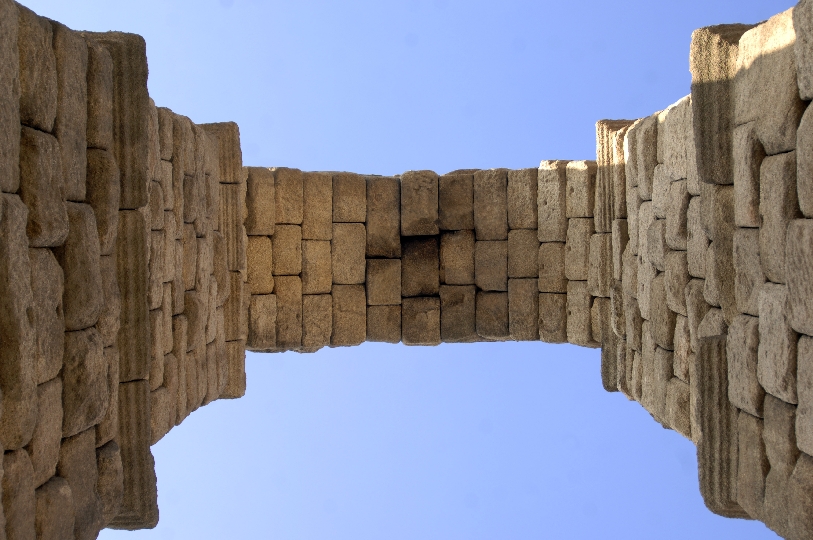
For its construction, the Romans used strong scaffolding to support the falsework, on which the voussoirs of the arches were fitted, whose central stone, the keystone, had to be perfectly carved in the shape of a wedge in order to be able to exert sufficient pressure.
It was necessary to mark the double holes that can still be seen today, at the ends of each granite ashlar, as large metal tongs were used to lift them. These tongs were closed by pulling them upwards and were tightened by the weight of the stone itself.
The ashlars located at a low height or below the ground were put in place and transported directly to their final position by moving them using oak rollers, dragging them along small wooden ramps supported on scaffolding or moved by the force of draft animals.
When the height was greater than the height of a man, they used large lifting wheels, driven by slaves, which turned an axle on which the hemp rope was wound, which, by means of a system of pulleys, allowed the ashlars to be lifted.
On the scaffolding, another group of workers were responsible for placing the stones in the right place, adjusting the ashlars by means of levers. Finally, the stonemason, on site, finished the work by carving the faces of each stone.
The marks that are visible today of construction in Roman times are those of adjustment, chipping and cushioning: those of adjustment are the indentations on the upper and lower edges. These indentations are produced by inserting an iron lever that made it possible to place the ashlars in their final position. The chipping marks are made by hammering vertical grooves into the ashlars that make up the ends of the pillars, and the cushioning marks were made to stylise the vertical edges.
Some of the stones still show the indentations into which the wooden wedges were inserted, which were swollen with water to achieve perfect cuts in the granite.
The aqueduct is wider at the bottom and becomes narrower as its height increases. This is an ingenious solution that helps to support its own weight.
The joining of the ashlars ‘opus quadrata’ is made without mortar, cement or lead. The ashlars are held together by a perfect study of the thrust of the stones.













